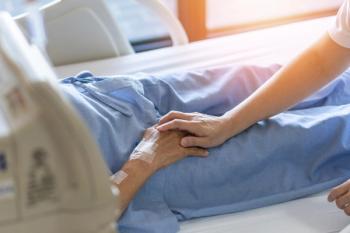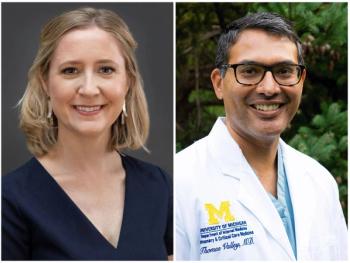
Treating frail elderly patients with multiple myeloma requires different approach
Transplant eligibility issues and drug regimen options raise difficult questions when treating older multiple myeloma patients.
Treating multiple myeloma is always challenging, but treating it in frail elderly patients comes with unique struggles.
Here, Ajay K. Nooka, MD, associate professor of hematology and medical oncology at Emory University School of Medicine and a member of the hematology care team at the Winship Cancer Institute at Emory University, highlights some of these unique challenges and how treatment should vary as a result.
Managed Healthcare Executive (MHE): What considerations are critical when treating frail elderly patients with myeloma?
Nooka: First, the patient should be given the best induction therapy. There have been several debates in the past about whether two-drug versus three-drug induction therapies is better. There was recently a phase-three trial by SWOG [a National Cancer Institute-affiliated worldwide network of researchers that conduct cancer clinical trials] basically showing that three-drug induction therapy-even in transplant-ineligible patients-can improve a patient’s survival by one year.
The second consideration is the transplant eligibility. All the clinical trials show that the patients who go for transplants live longer than patients who don’t go for transplants. Unlike in Europe, where they take your age as a cut off, here in the United States, we take a physiological age into consideration rather than the numerical age, and we offer transplants to anybody who is eligible for them.
That brings us to early mortality with transplants and transplant-related mortalities. The big data sets from the American Society of Bone Marrow Transplants and the European Society for Blood and Marrow Transplantation have shown that the mortality of elderly patients is less or comparable to younger patients, reflecting the idea that we select these patients extremely carefully for transplant.
I always try to push my patients to be eligible for transplant, as long as there are no contraindications.
MHE: How does age play into the two-drug regimen versus the three-drug regimen approach?
Nooka: In an elderly population with myeloma patients, where the median age is 70 at the age of diagnosis, you have to take into consideration that many of these elderly patients have disease comorbidities, like diabetes and hypertension.
There are consequences, for example, with having diabetes. Many patients with long-standing diabetes have peripheral neuropathy, and, as a result, they may not be the right patients to give certain therapies.
MHE: How much does age help you determine whether a patient is appropriate for a given therapy?
Nooka: We have not been as successful, from a U.S. perspective, in identifying these patients. Not every 70-year-old patient looks the same. There are 70-year-olds who look like they’re 50, and there are 70-year-olds who look like they’re 90.
There are researchers in Italy who have spearheaded the usage of geriatric assessments in this population, based on their comorbidities, cognitive function, as well as their physical status. In the United States, for a long time, we only used the performance status as the predictor of mortality or long-term outcomes.
MHE: What does the assessment by Italian researchers look like?
Nooka: What they’re doing in Italy has been completely endorsed by the International Myeloma Working Group, where they proposed three groups of seniors with multiple myeloma-the fit group, the intermediate fit group, and the frail group-to better assess these patients and provide them with ideal therapies and appropriate dose selection.
This has helped in identifying those patients who can receive more intense therapies versus less intense therapies. That means that these patients get the benefits of the drugs, not the toxicity of the drugs.
MHE: What else been learned from clinical trials about treating older multiple myeloma patients?
Nooka: In all the phase-three clinical trials, we have seen that continuous treatment for multiple myeloma patients is best. Take for example, the first trial, which compared the lenalidomide and dexamethasone for a fixed period of 18 months, lenalidomide and dexamethasone for continuous treatment, and a third melphalan-based therapy-melphalan, plus prednisone and lenalidomide--for a fixed duration. The only arm that showed a significant survival improvement was the one that had the continuous therapy of dexamethasone.
My point is all these patients need continuous therapy.
Newsletter
Get the latest industry news, event updates, and more from Managed healthcare Executive.


















































